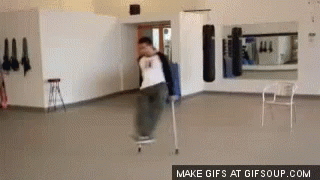Biomechanics Blog Post #7: Locomotion and Assistive Devices

Assistive Devices (AD) are extremely important for many people around the world. There are many positives for individuals who has received AD. The positives of obtaining a properly fitted AD consist of: widening the client's Base of Support (BOS), improving balance and stability, redistributing the weight of the client, and decreasing pain in certain areas. Proper measurements are vital when providing to a client. If the measurements of the client's crutches are too high into their armpits, it can cause tight compressions in the axilla that can lead to another potential injury.
I would accomplish my measurements for the cane, axillary crutches, Lofstrand crutches, platform walker, and a rolling walker by following regulations. I will fit my canes and walkers by doing the following: making the hand grip at the level of the wrist crease or greater trochanter of the femur, placing the elbows in a relaxed position while maintaining 20-30 degrees of flexion, and not allowing the shoulders to become elevated. I would only recommend a cane for a client that has a good sense of stability and strength, since it is the least stable of the devices. The client will be taught to use the cane on the opposite side of the affected side. The platform walker will be recommended to a client that cannot withstand weight through their wrists. Their measurements will still follow as previously stated above, but instead of the client using their wrists for control, they will lean on their forearms to accept the force. The rolling walker will be recommended to a client that has weak upper extremities, since they struggle lifting the walker. Adding wheels to such a walker will allow the client to be able to move appropriately without having to use strength. I will fit the various crutches by doing the following: making the hand grip at the level of the wrist crease or greater trochanter of the femur, placing the elbows in a relaxed position while maintaining 20-30 degrees of flexion, not allowing the shoulders to become elevated, and having the axillary rest 4-5 cm below the floor of the axilla. The Lofstrand crutches will be recommended for clients with long term disabilities. It will provide more stability compared to a cane, but less than standard axillary crutches. It provides cuff links around the forearms to help with control. The axillary crutches will be recommended as a standard AD after a lower extremity injury or after surgery.
Comments
Post a Comment